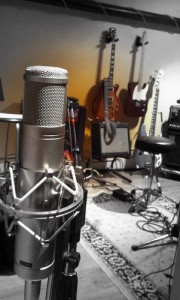Working my way through the Picasa E-learning toolkit activity was a lot of fun because it allowed me to get reacquainted with one of my favourite pieces of software. In addition, it reminded me of how powerful and useful the Picasa software is. The first step I had to do before I could work through this activity was to install Picasa. Recently, my main computer had died (the screen went black). This forced me to purchase another computer. Since my laptop is so new, I had yet to install some of the software that I usually cannot live without. One of these programs happens to be Picasa. It is quite unbelievable that such a great piece of photo editing software is available for free to download. It definitely is a testament to Google and their ability to create creative, powerful, and fun software. Using Picasa in conjunction with Gimp (another free photo editing software similar to Photoshop) gives me all the photo editing and organizing that I need.
Once I had installed Picasa I decided to browse through the more recent pictures on my computer to see if I could find something I could use for the tutorial. After a few moments, I decided to go with a picture I took off of the pier in Sechelt, British Columbia. I chose this photo because of beautiful scenery captured in the photo and because it was one of the first photos I had taken with my brand new iPhone 4. The iPhone 4 camera is a treat to use and it has rekindled my love for photography, mainly because it takes excellent photos and because it is convenient.
Editing my photo was a breeze in Picasa. Cropping the photo was the first edit I made and it really could not have been easier. Once the photo was loaded, there were many editing function icons to the left of the photo. Under the tab “Basic Fixes” is where you can find the crop functionality. Once you click on this function, you take the crop tool, place it on your photo, and drag the cursor over the area of the photo that you would like to preserve for your new cropped photo. The new cropped area will become the darker area of the photo. If you like what you have selected, the next step is to press the apply button and you are set. It really doesn’t get any easier than this, which is one of the reasons why I endorse Picasa so extensively.
Resizing a photo in Picasa is just as easy. Once the user has a photo selected, all they have to do is click on file, which is located on the menu bar at the top of the screen. Next, find the export picture to folder button. Once done, you can enter the resize t
I also decided to experiment with some of the other editing features of Picasa using a different photo I recently took. To make the picture more appealing I cropped the photo. I then added an effect called “B & L focal point” which removed most of the colour of the photo aside from a little bit around the middle. The end result was very pleasing and took very little effort on my part. That is why I feel that Picasa is great for blogs and webpages as you can manipulate pictures easily using Picasa’s simple photo editing features. To summarize, I really can’t say that much surprised me or challenged me about using Picasa, but I will say that I am always blown away by the software’s ease of use and extensive features list.
Oh and did I tell you that it is free?

